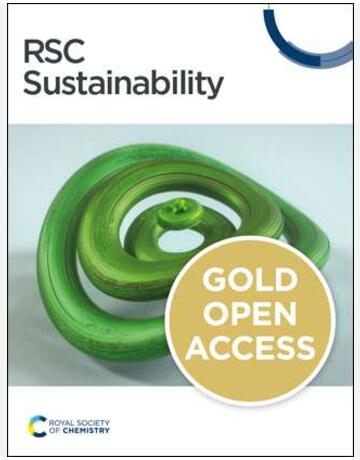Interdecadal Variations in Agricultural Drought Monitoring Using Land Surface Temperature and Vegetation Indices: A Case of the Amahlathi Local Municipality in South Africa
IF 3.3
3区 环境科学与生态学
Q2 ENVIRONMENTAL SCIENCES
引用次数: 0
Abstract
Agricultural droughts in South Africa, particularly in the Amahlathi Local Municipality (ALM), significantly impact socioeconomic activities, sustainable livelihoods, and ecosystem services, necessitating urgent attention to improved resilience and food security. The study assessed the interdecadal drought severity and duration in Amahlathi’s agricultural potential zone from 1989 to 2019 using various vegetation indicators. Landsat time series data were used to analyse the land surface temperature (LST), soil-adjusted vegetation index (SAVI), normalized difference vegetation index (NDVI), and standardized precipitation index (SPI). The study utilised GIS-based weighted overlay, multiple linear regression models, and Pearson’s correlation analysis to assess the correlations between LST, NDVI, SAVI, and SPI in response to the agricultural drought extent. The results reveal a consistent negative correlation between LST and NDVI in the ALM, with an increase in vegetation (R2 = 0.9889) and surface temperature. LST accuracy in dry areas increased to 55.8% in 2019, despite dense vegetation and a high average temperature of 40.12 °C, impacting water availability, agricultural land, and local ecosystems. The regression analysis shows a consistent negative correlation between LST and NDVI in the ALM from 1989 to 2019, with the correlation between vegetation and surface temperature increasing since 2019. The SAVI indicates a slight improvement in overall average vegetation health from 0.18 in 1989 to 0.25 in 2009, but a slight decrease to 0.21 in 2019. The SPI at 12 and 24 months indicates that drought severely impacted vegetation cover from 2014 to 2019, with notable recovery during improved wet periods in 1993, 2000, 2003, 2006, 2008, and 2013, possibly due to temporary drought relief. The findings can guide provincial drought monitoring and early warning programs, enhancing drought resilience, productivity, and sustainable livelihoods, especially in farming communities.利用地表温度和植被指数监测农业干旱的年代际变化:南非 Amahlathi 地方市政当局的案例
南非的农业干旱,尤其是阿马拉蒂地方市政当局(ALM)的农业干旱,严重影响了社会经济活动、可持续生计和生态系统服务,因此迫切需要关注提高抗灾能力和粮食安全。该研究利用各种植被指标评估了 1989 年至 2019 年期间阿马拉蒂农业潜力区的十年间干旱严重程度和持续时间。研究利用陆地卫星时间序列数据分析了地表温度(LST)、土壤调整植被指数(SAVI)、归一化差异植被指数(NDVI)和标准化降水指数(SPI)。研究利用基于地理信息系统的加权叠加、多元线性回归模型和皮尔逊相关性分析,评估了地表温度、植被指数、归一化差异植被指数和标准化降水指数之间的相关性,以及它们对农业干旱程度的响应。结果表明,随着植被(R2 = 0.9889)和地表温度的增加,ALM 地区的 LST 和 NDVI 之间始终保持负相关。尽管植被茂密,平均气温高达 40.12 °C,但 2019 年干旱地区的 LST 准确率仍上升至 55.8%,对水源、农田和当地生态系统造成了影响。回归分析表明,从 1989 年到 2019 年,ALM 的 LST 与 NDVI 之间始终呈负相关,而植被与地表温度之间的相关性自 2019 年以来有所增加。SAVI 表明整体平均植被健康状况略有改善,从 1989 年的 0.18 升至 2009 年的 0.25,但在 2019 年又略有下降,降至 0.21。12 个月和 24 个月的 SPI 表明,从 2014 年到 2019 年,干旱严重影响了植被覆盖度,在 1993 年、2000 年、2003 年、2006 年、2008 年和 2013 年的湿润期,植被覆盖度显著恢复,这可能是由于干旱暂时缓解所致。研究结果可指导省级干旱监测和预警计划,提高抗旱能力、生产力和可持续生计,尤其是在农业社区。
本文章由计算机程序翻译,如有差异,请以英文原文为准。
求助全文
约1分钟内获得全文
求助全文
来源期刊

Sustainability
ENVIRONMENTAL SCIENCES-ENVIRONMENTAL SCIENCES
CiteScore
6.80
自引率
20.50%
发文量
14120
审稿时长
17.72 days
期刊介绍:
Sustainability (ISSN 2071-1050) is an international and cross-disciplinary scholarly, open access journal of environmental, cultural, economic and social sustainability of human beings, which provides an advanced forum for studies related to sustainability and sustainable development. It publishes reviews, regular research papers, communications and short notes, and there is no restriction on the length of the papers. Our aim is to encourage scientists to publish their experimental and theoretical research relating to natural sciences, social sciences and humanities in as much detail as possible in order to promote scientific predictions and impact assessments of global change and development. Full experimental and methodical details must be provided so that the results can be reproduced.
 求助内容:
求助内容: 应助结果提醒方式:
应助结果提醒方式:


